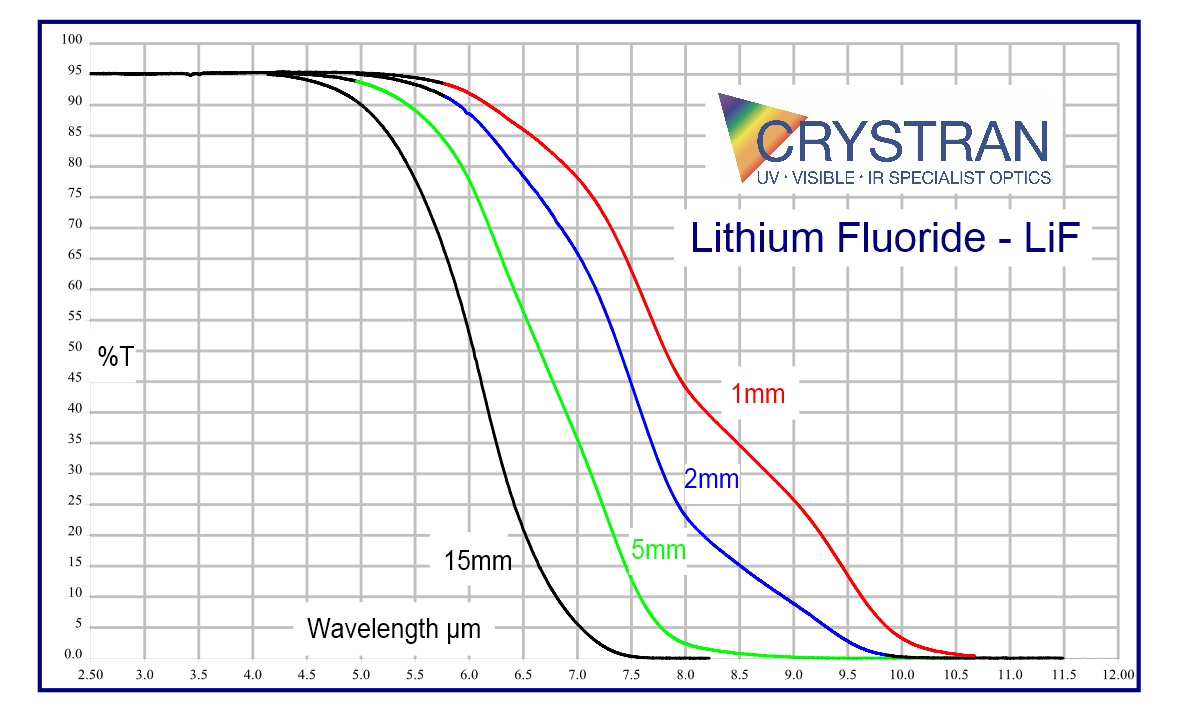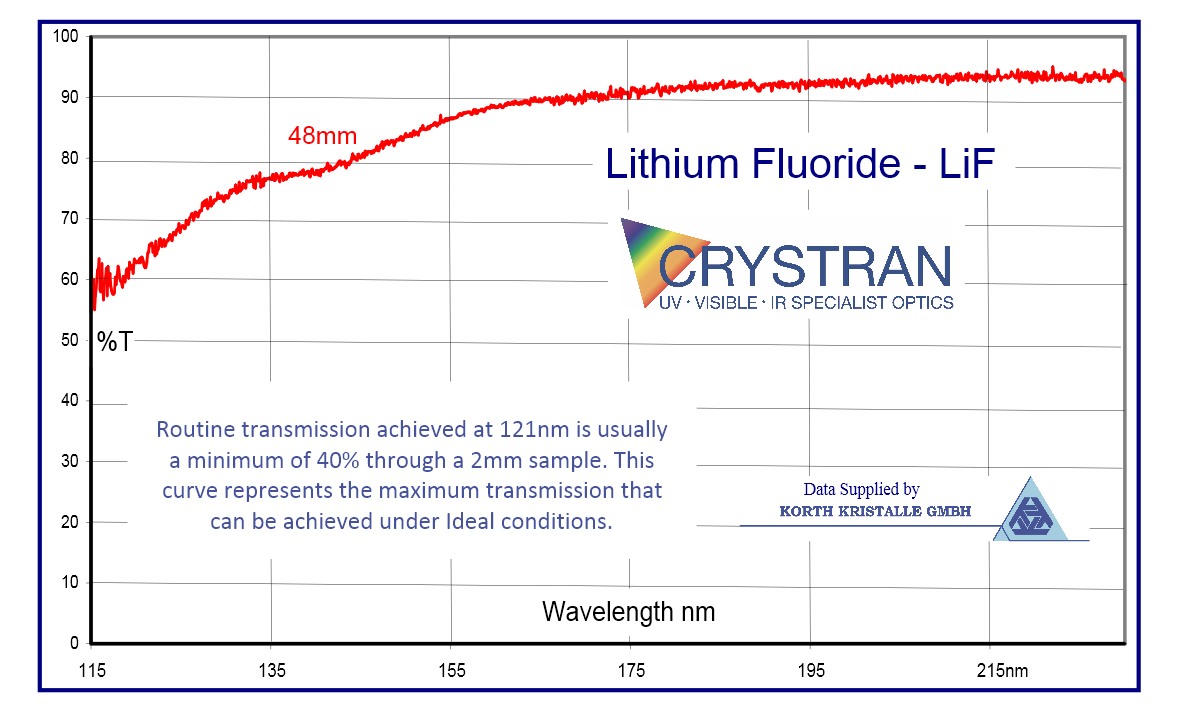

Lithium Fluoride LiF
Lithium fluoride is the material with the most extreme UV transmission of all and is used for special UV optics. Lithium fluoride transmits well into the VUV region at the hydrogen Lyman-alpha line (121nm) and beyond. Lithium fluoride is also used for X-ray monochromator plates where its lattice spacing makes it the most useful analysis crystal.




| µm | No |
|---|---|
| 0.106 | 1.9130 |
| 0.108 | 1.8330 |
| 0.110 | 1.7770 |
| 0.121 | 1.6240 |
| 0.130 | 1.5690 |
| 0.140 | 1.5300 |
| 0.150 | 1.5030 |
| 0.160 | 1.4840 |
| 0.170 | 1.4690 |
| 0.180 | 1.4850 |
| 0.190 | 1.4455 |
| 0.200 | 1.4391 |
| 0.220 | 1.4291 |
| 0.250 | 1.4189 |
| 0.260 | 1.4164 |
| 0.270 | 1.4141 |
| 0.280 | 1.4121 |
| µm | No |
|---|---|
| 0.290 | 1.4103 |
| 0.300 | 1.4087 |
| 0.310 | 1.4073 |
| 0.320 | 1.4060 |
| 0.330 | 1.4048 |
| 0.340 | 1.4037 |
| 0.350 | 1.4028 |
| 0.360 | 1.4019 |
| 0.400 | 1.3989 |
| 0.500 | 1.3943 |
| 0.600 | 1.3918 |
| 0.700 | 1.3902 |
| 0.800 | 1.3890 |
| 0.900 | 1.3880 |
| 1.000 | 1.3871 |
| 1.500 | 1.3832 |
| 2.000 | 1.3788 |
| µm | No |
|---|---|
| 2.500 | 1.3788 |
| 3.000 | 1.3666 |
| 3.500 | 1.3587 |
| 4.000 | 1.3494 |
| 4.500 | 1.3388 |
| 5.000 | 1.3266 |
| 5.100 | 1.3240 |
| 5.200 | 1.3213 |
| 5.300 | 1.3186 |
| 5.400 | 1.3158 |
| 5.500 | 1.3129 |
| 5.600 | 1.3099 |
| 5.700 | 1.3069 |
| 5.800 | 1.3038 |
| 5.900 | 1.3007 |
| 6.000 | 1.2975 |
Lithium Fluoride is grown by vacuum Stockbarger technique in ingots approximately 100mm diameter. Lithium Fluoride cleaves easily and must be worked with extreme care. Polishing, particularly steep radii, often causes surface "rip-out".
REFERENCES:
(1) Laporte et. al. J.Opt. Soc. Am. V73, No 8, p1062
(2) Combes et. al. J.Opt. Soc. Am. V41, p215. 1951
(3) Huntingdon, Phys Review. V72, p321, 1947
(4) Ballard et. al. J.Opt. Soc. Am. V42, p684. 1952
(5) H.H.Li, Absorption Coefficients, Int.J.Therm, V1, No. I, 1980
(6) T.B.Douglas & J.L.Dever, J. Am. Chem.Soc, 1954,76 (19), p4826